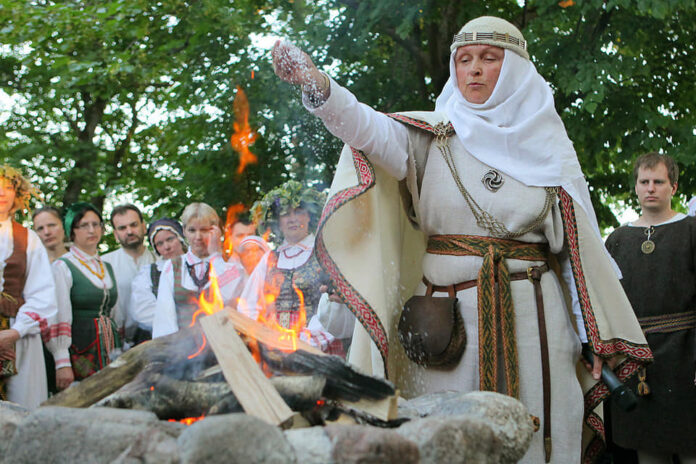
June 24th is the feast of St. John the Baptist, widely celebrated in Lithuania (Joninės), and is also a national holiday in Quebec, known as St. Jean Baptiste Day.
In Lithuania, as in many European countries, it is a midsummer feast celebrated since earliest times at the summer solstice. After the spread of Christianity, the pagan festival was made to coincide with the feast of St. John the Baptist, a favourite saint (hence the frequent Lithuanian male name Jonas) in Lithuania.
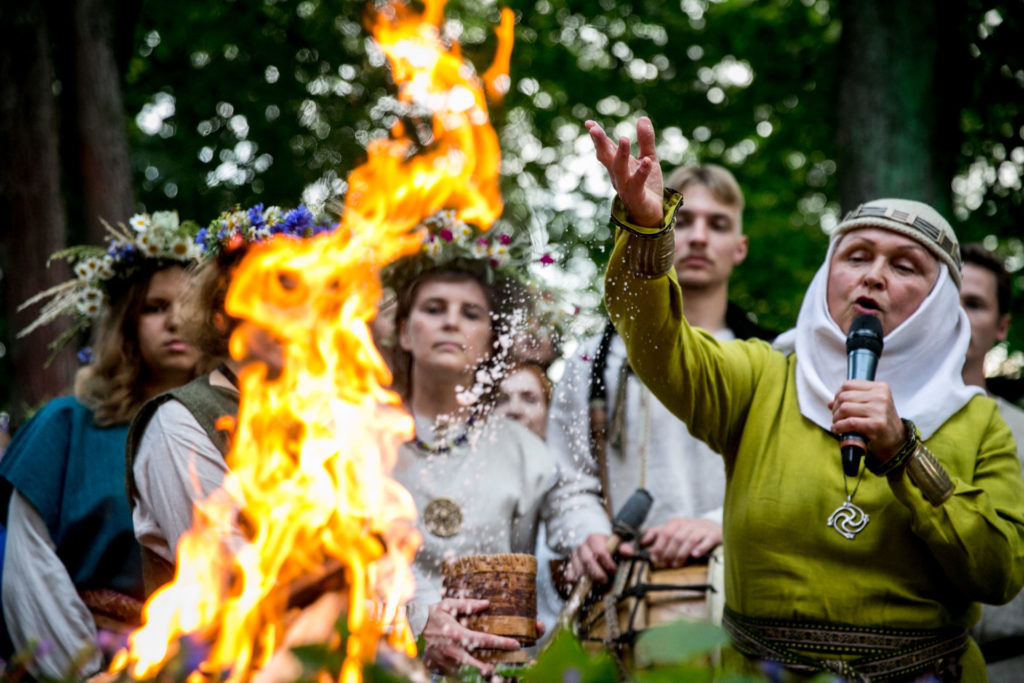
In times past, Joninės was the most popular summer festival, marking the year‘s shortest night and longest day. St. John‘s night was a night of omens and magic, secrets and rituals. It is famous for its bonfires, lit on hilltops to burn all night and frighten away witches and evil spirits and their spells. In more recent times, bonfires are gathering places for singing, dancing and feasting.
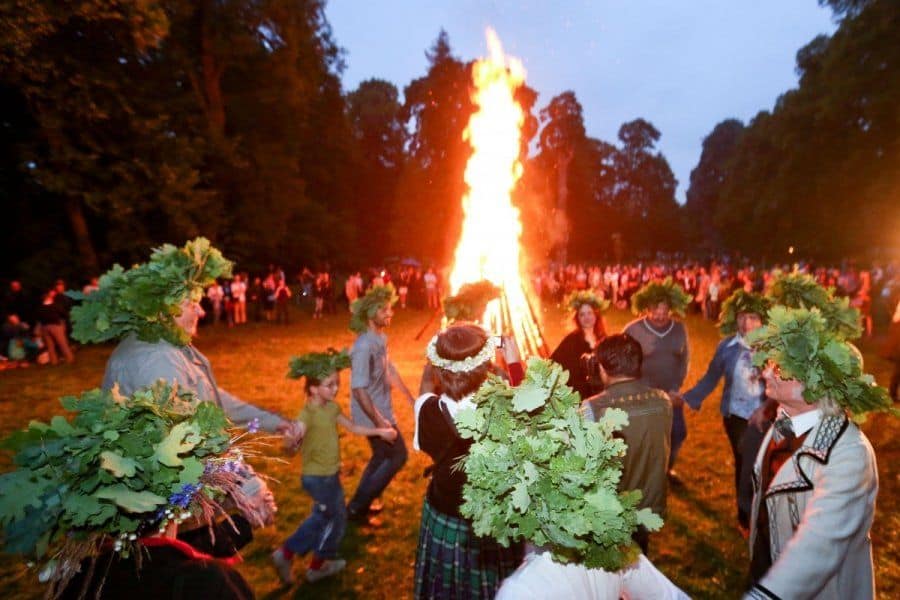
On St. John‘s night, young people don‘t sleep at all, in order to make sure they see the sun rise. At dawn, the sun “dances“ and changes colour as it rises, and witnessing it brings happiness and health all year. On St. John‘s night even water has miraculous powers. Bathing in flowing water or rolling naked in the dewy grass prevents ailments and ensures youthful skin.
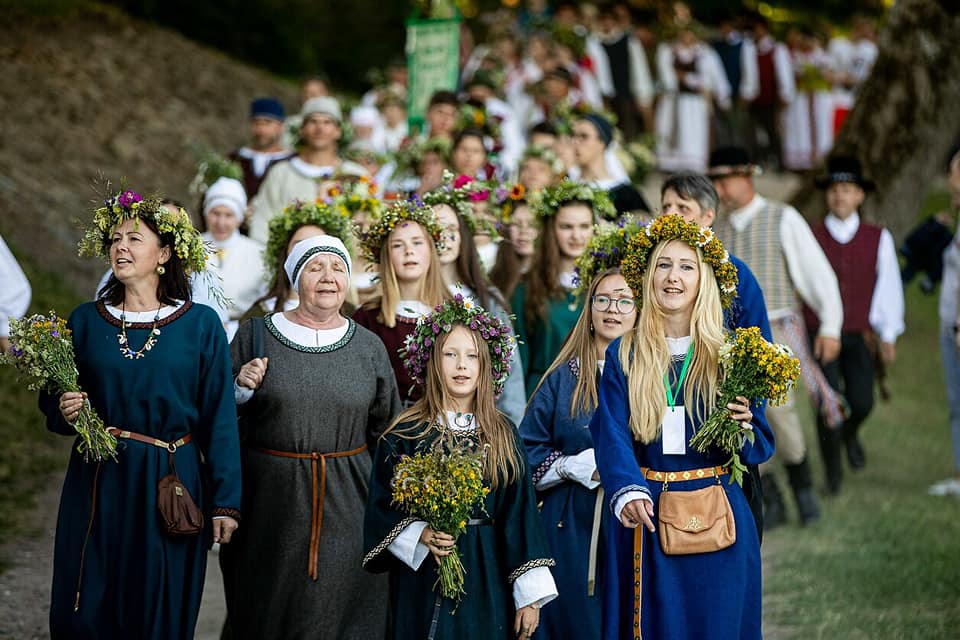
The most magical event of St. John‘s night is the blooming of the fern. Whoever finds the fern blossom will be able to understand not only the language of birds and animals, but of all humans in the world. This person will know what others are thinking, where fortunes are buried, and who will die. These properties of the fern blossom are also known to witches and demons, who will make every effort to distract the blossom-seeker from his quest. The fern‘s blossom is said to be shiny, sparkling red or rainbow-coloured and opens at exactly midnight on St. John‘s night. It can be plucked only if a circle is traced around the fern clump with a twig of the mountain ash (šermukšnis), as this tree is feared by evil spirits and witches.
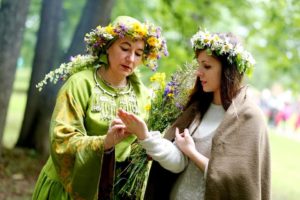 St. John‘s night is yet another time for predictions for Lithuanians. Traditionally, girls braided wreaths and tried to throw them up onto a tree branch – the number of attempts it took her to succeed would be the number of years until her wedding. Wreaths are still braided, named for the wreath-maker, and tossed into a river or stream. The wreaths that touch mean the two will be a couple; those that float easily mean the person‘s life will be happy; a sinking wreath means death. Jumping over bonfires in pairs also served to predict weddings, with unsinged clothing boding well for love, happiness and wealth.
St. John‘s night is yet another time for predictions for Lithuanians. Traditionally, girls braided wreaths and tried to throw them up onto a tree branch – the number of attempts it took her to succeed would be the number of years until her wedding. Wreaths are still braided, named for the wreath-maker, and tossed into a river or stream. The wreaths that touch mean the two will be a couple; those that float easily mean the person‘s life will be happy; a sinking wreath means death. Jumping over bonfires in pairs also served to predict weddings, with unsinged clothing boding well for love, happiness and wealth.
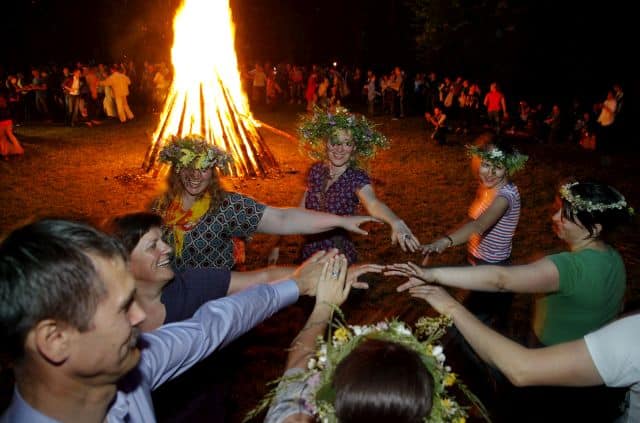
In pagan times Joninės were called Rasos šventė – the Festival of Dew. Today, many of the old pagan rituals are still commemorated at events held throughout Lithuania. Celebrations traditionally begin on June 23rd and continue until dawn of the 24th. We may have missed it this year, but we can still say Happy Feast Day to all our friends and relatives named Jonas.
With information from Lithuanian Customs and Traditions by Danutė Bindokienė



























